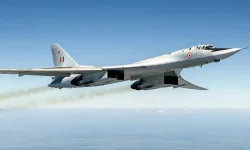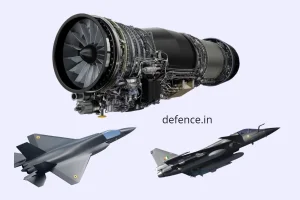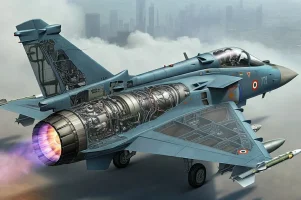- Views: 1K
- Replies: 32
India is currently evaluating critical pathways to enhance its long-range strategic strike capabilities, a move that places the Indian Air Force (IAF) at a strategic crossroads.
The nation is weighing two distinct options: acquiring a proven foreign platform, such as Russia's Tupolev Tu-160M strategic bomber, or committing to the long-term development of an indigenous stealth bomber potentially derived from its own Ghatak unmanned combat aerial vehicle (UCAV) program.
Renewed interest from the IAF in a foreign-made bomber has brought the Russian Tu-160M 'White Swan' into focus. As a long-standing defence partner, Russia has offered the platform to India, though it remains uncertain whether this would involve an outright purchase or a lease agreement.
The Tu-160M is the world's heaviest and fastest supersonic strategic bomber, capable of carrying a significant payload of long-range cruise missiles, which would substantially boost India's power projection.
This is not the first time the two nations have discussed such a deal. However, earlier considerations to lease the bomber have been complicated by the current geopolitical climate, particularly the ongoing war in Ukraine and the subsequent international sanctions on Russia's defence industry. While these discussions have slowed, they have not been officially terminated.
India has a history of operating Tupolev aircraft, with the Indian Navy having successfully used the Tu-142, a maritime reconnaissance variant of the Tu-95 bomber, for nearly three decades, demonstrating a foundation of operational experience with such platforms.
Over the years, Russia has proposed several bomber aircraft to India.
An early offer of the Tu-22 was declined due to performance concerns. Later, the more advanced Tu-22M 'Backfire' was considered for the Indian Navy to enhance its maritime strike role, but a potential lease for four aircraft was shelved after it was determined that the offered units would require extensive and costly upgrades.
More recently, the tactical Su-34 'Fullback' was promoted as a strike aircraft, but its limited range makes it more of a tactical bomber, a role already fulfilled by the IAF's Su-30MKI fleet.
The push for a dedicated bomber stems from a recognised gap in India's military capability.
Despite possessing a robust arsenal of ballistic missiles and modern fighter jets like the Rafale, which can launch SCALP cruise missiles, the IAF lacks a dedicated long-range strategic bomber.
Such an aircraft provides unparalleled payload capacity, range, and loitering time, which is crucial for both conventional deep-strike missions and strengthening the credibility of India's nuclear second-strike capability.
This need is amplified by regional and global developments, as China operates its H-6K bomber and is developing the H-20 stealth bomber, while global powers like the U.S. (B-21 Raider) and Russia (PAK-DA) are also advancing their next-generation bomber fleets.
As an alternative to foreign procurement, India is actively pursuing a domestic solution. Reports indicate significant progress in the indigenous Ghatak UCAV program, managed by the Defence Research and Development Organisation (DRDO).
It is believed that the technologies and design principles from the Ghatak program could eventually be scaled up to develop a 50-tonne class stealth bomber, capable of carrying strategic payloads like the next-generation BrahMos-NG cruise missiles.
The technology demonstrator for Ghatak program, known as the Stealth Wing Flying Testbed (SWiFT), is expected to begin trials by 2026-27.
This has led to speculation that India may be pursuing a dual-track strategy.
One possibility is acquiring a limited number of Russian bombers as a stop-gap measure to immediately address the capability gap, while simultaneously investing in the indigenous Ghatak-derived platform for long-term strategic autonomy.
Meanwhile, some analysts suggest Russia may also be trying to persuade India to join its next-generation PAK-DA stealth bomber program as a funding partner to share the high development costs.
However, India has made no public commitment to this, and the ultimate decision will fundamentally shape the country's strategic posture for decades to come.




